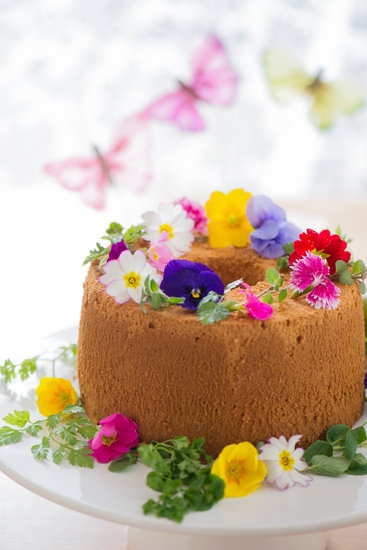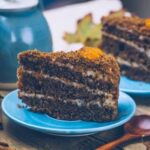When it comes to cake decorating, the right icing can make all the difference. Whether you’re a seasoned baker or just starting out, mastering the art of icing is essential for creating beautiful and delicious cakes. From buttercream to fondant to royal icing, each type of icing brings its own unique qualities to the table. The keyword “icing for cake decorating” is key in achieving stunning results that will impress your friends and family.
Icing not only adds flavor and sweetness to your cakes but also acts as a blank canvas for your creative designs. Understanding the different types of icing available and how to choose the best one for your project is vital in achieving professional-looking results. Factors such as texture, taste, durability, and ease of use should all be taken into consideration when selecting the perfect icing for your cake.
In this comprehensive guide, we will explore the various types of icing commonly used in cake decorating, from classic buttercream to versatile fondant and intricate royal icing. We will discuss how to make buttercream from scratch and offer step-by-step instructions on using fondant for flawless finishes.
Additionally, we will provide expert tips on achieving smooth icing surfaces and troubleshooting common issues that may arise during decorating. Mastering these techniques will elevate your cake decorating skills and allow you to create stunning edible works of art.
Types of Icing
When it comes to cake decorating, the type of icing you choose can make all the difference in the final result. Buttercream icing is a classic choice known for its creamy texture and versatility. It is perfect for piping borders, flowers, and other decorations on cakes. Fondant icing, on the other hand, provides a smooth and flawless finish that is popular for wedding cakes and special occasions. Its pliability allows for intricate designs and creative cake styles.
Royal icing is another common type of icing used in cake decorating. Made from confectioners’ sugar and egg whites, royal icing hardens into a smooth finish that is ideal for creating 3D decorations such as flowers, lace patterns, and intricate designs on cookies and gingerbread houses. This type of icing is great for detailed work that requires precision and intricate details.
Aside from these main types of icing, there are also variations such as cream cheese frosting, ganache, marzipan, and whipped cream among others. Each type of icing has its unique characteristics that cater to different styles of cake decorating. Whether you prefer a buttery flavor with buttercream or a sleek modern look with fondant, choosing the right icing can elevate your cake decorating skills to new heights.
| Type of Icing | Main Characteristics |
|---|---|
| Buttercream | Versatile texture; ideal for piping decorations |
| Fondant | Smooth finish; perfect for intricate designs |
| Royal Icing | Hardens into smooth finish; great for detailed work |
Choosing the Right Icing for Your Cake
When it comes to choosing the right icing for your cake, there are several important factors to consider. One of the key considerations is the type of cake you will be decorating. Different types of icing work better with certain cake textures and flavors.
For example, buttercream is a versatile and popular choice that pairs well with most cakes, while fondant may be better suited for more detailed designs or sculpted cakes. Royal icing, on the other hand, is ideal for intricate piping work.
Another factor to think about when selecting an icing is the overall look and style you want to achieve with your cake design. Buttercream icing can create a soft and textured finish, perfect for rustic or floral decorations. Fondant offers a smooth and flawless appearance that is great for elegant wedding cakes or detailed characters. Royal icing lends itself well to intricate lace designs or delicate details on cookies.
The occasion for which the cake will be served is also an important consideration when choosing the right icing. For example, if you are making a children’s birthday cake, you may want to opt for a colorful buttercream frosting that kids will love.
On the other hand, if you are creating a sophisticated dessert for a formal event, fondant or royal icing may be more suitable options. Ultimately, the key is to select an icing that not only complements your cake but also enhances the overall theme and presentation.
| Factors to Consider When Choosing Icing | Examples |
|---|---|
| Type of Cake | Buttercream – versatile and pairs well with most cakes; Fondant – great for detailed designs; Royal Icing – ideal for intricate piping work. |
| Look and Style | Buttercream – soft and textured finish; Fondant – smooth and flawless appearance; Royal Icing – intricate lace designs. |
| Occasion | Kids’ Birthday Cake – colorful buttercream frosting; Formal Event Dessert – fondant or royal icing. |
How to Make and Color Buttercream Icing From Scratch
Buttercream icing is a classic and versatile option for cake decorating, loved for its creamy texture and ability to hold intricate designs. Making buttercream icing from scratch allows you to control the ingredients and achieve a personalized flavor profile. To start, you will need unsalted butter, powdered sugar, vanilla extract, and a splash of milk or cream.
To make buttercream icing, begin by creaming the softened butter in a mixing bowl until it becomes light and fluffy. Gradually add in the sifted powdered sugar while continuing to beat the mixture. Once incorporated, add vanilla extract for flavor and adjust the consistency with milk or cream as needed. The key to achieving the perfect buttercream consistency is to strike a balance between smoothness for easy piping and stiffness for structure.
Coloring buttercream icing opens up endless possibilities for creativity in cake decorating. Gel food coloring is recommended over liquid options as it provides vibrant hues without altering the consistency of the icing.
Start by adding small amounts of gel food coloring until you reach your desired shade, remembering that colors intensify over time as the icing sits. Experiment with different color combinations and techniques like ombre or marble effects to elevate your cake design even further with your homemade buttercream icing.
Incorporating homemade buttercream icing into your cake decorating repertoire not only allows you to personalize flavors but also adds a touch of craftsmanship to your creations. Whether you’re aiming for a smooth finish on a birthday cake or intricate piping details on wedding cupcakes, mastering the art of making and coloring buttercream icing from scratch will undoubtedly enhance your skills as a baker and decorator.
Step-by-Step Guide to Using Fondant Icing for Cake Decorating
Fondant icing is a popular choice for cake decorators looking to achieve a smooth and flawless finish. Made from sugar, water, and gelatin, fondant can be rolled out into thin sheets and draped over cakes for a neat appearance. Here is a step-by-step guide on how to use fondant icing for your cake decorating projects:
- Prepare Your Cake: Start by ensuring that your cake is properly leveled and crumb-coated with buttercream icing to create a smooth base for the fondant.
- Knead the Fondant: Knead the fondant until it becomes pliable and easy to work with. Dust your work surface with powdered sugar to prevent sticking.
- Roll Out the Fondant: Roll out the fondant into a circle large enough to cover the top and sides of your cake. Use a rolling pin to lift the fondant over your cake gently.
- Smooth and Trim: Use a fondant smoother to gently press the fondant against the cake, starting from the top and working down the sides. Trim any excess fondant with a sharp knife or pizza cutter.
- Decorate: Once the fondant is in place, you can decorate it further with additional cut-outs, embossing, or painting using edible food colors.
Using fondant icing requires some practice to master, but with time and patience, you can create beautifully decorated cakes that will impress your friends and family. Experiment with different colors, textures, and techniques to elevate your cake decorating skills using this versatile icing option.
Creative Techniques for Using Royal Icing in Cake Designs
Royal icing is a versatile and popular choice for cake decorators due to its ability to create intricate designs and decorations. This type of icing is made from confectioners’ sugar, egg whites, and sometimes flavorings like vanilla or lemon extract. Royal icing is known for hardening when exposed to air, making it ideal for creating 3D embellishments, piping intricate details, and even constructing structures on cakes.
One creative technique for using royal icing in cake designs is flooding. Flooding involves outlining a design on a cake with a thicker consistency of royal icing before filling in the outlined area with a thinner consistency of the same icing.
This creates a smooth and seamless surface that can be used as a base for further decoration or as a standalone design element. Flooding can be used to create vibrant colors, marbled effects, and even watercolor-like designs on cakes.
Another technique that showcases the versatility of royal icing is brush embroidery. This technique involves using a paintbrush to create textured patterns on dried royal icing surfaces. By gently brushing the surface with a damp brush, decorators can create delicate floral patterns, lace-like designs, or even whimsical strokes that add depth and dimension to their cake decorations. Brush embroidery is a simple yet impactful way to elevate the overall look of your cake design using royal icing.
Pro Tips for Achieving Smooth and Professional Icing Finish
Achieving a smooth and professional icing finish is essential in cake decorating to showcase your skills and create a visually appealing product. Whether you are working with buttercream, fondant, or royal icing, mastering the techniques for a flawless finish can elevate your cakes to the next level. Here are some pro tips to help you achieve that perfect icing finish.
Consistency Is Key
One crucial aspect of achieving a smooth icing finish is ensuring the right consistency of your icing. For buttercream, make sure it is neither too thick nor too thin – it should be spreadable but hold its shape well. Fondant should be kneaded until smooth and pliable, without any cracks or dry spots.
Royal icing should have a stiff consistency for outlining and flooding cookies or decorations. By adjusting the consistency of your icing accordingly, you can easily achieve a smooth finish.
Prepping Your Cake
Before applying the icing, it’s important to prepare your cake properly for the best results. Crumb coat your cake by applying a thin layer of icing to seal in any crumbs before adding the final layer. Chill the cake after crumb coating to set the icing and create a smooth base for further decoration. Make sure your cake is level and straight to avoid lopsided or uneven icing application.
Tools of the Trade
Using the right tools can make all the difference in achieving a smooth and professional finish on your cakes. Invest in an offset spatula for spreading buttercream smoothly, a fondant smoother for seamless finishes with fondant, and piping bags and tips for precise designs with royal icing.
A turntable can also be handy for rotating your cake while decorating, ensuring even coverage of icing on all sides. With the proper tools at your disposal, you’ll find it easier to achieve that flawless icing finish every time.
Troubleshooting Common Icing Issues and How to Fix Them
Cracking Fondant
One common issue that cake decorators may encounter when working with fondant icing is cracking. This can be caused by a few factors, including the fondant being rolled too thin or not kneaded enough.
To fix this issue, you can try kneading the fondant more to make it more pliable and less likely to crack. Additionally, you can try rolling out a new piece of fondant to cover the cracked area or use a small amount of vegetable shortening to smooth out and hide any cracks.
Buttercream Icing Melting
Another common problem that decorators face is buttercream icing melting, especially in hot and humid weather. To prevent this from happening, make sure your cake is properly chilled before applying the buttercream. If you notice the icing starting to melt, place the cake in the refrigerator for a few minutes to allow it to firm up again. You can also try adding a little extra powdered sugar to thicken the buttercream if needed.
Air Bubbles in Royal Icing
When using royal icing for decorating, air bubbles can sometimes form and create an uneven finish on your cake. To avoid this issue, make sure to mix your royal icing gently and avoid overmixing, which can incorporate air into the mixture.
If air bubbles do appear, simply use a toothpick or needle tool to carefully pop them and then smooth over the surface with a spatula or decorating tool. Properly allowing your royal icing decorations to dry before adding additional layers can also help prevent air bubbles from forming.
Decorating Ideas and Inspirations for Using Different Types of Icing
When it comes to cake decorating, the type of icing you choose can make a huge difference in the final look and taste of your creation. Different types of icing offer unique textures, colors, and finishes that can elevate your cake design to the next level. Whether you prefer the smooth and creamy texture of buttercream, the pliability of fondant, or the crisp finish of royal icing, each type brings its own set of decorating possibilities.
Buttercream icing is a popular choice for many decorators due to its versatility and delicious taste. You can easily color buttercream using gel food coloring or natural ingredients like beetroot powder for vibrant hues. Use a piping bag with different tips to create various swirls, rosettes, and borders on your cake. For a more rustic look, try using a spatula to create textured designs or add sprinkles and edible glitter for extra flair.
Fondant icing offers a smooth and seamless finish that is perfect for creating intricate details on cakes. With fondant, you can cover an entire cake or create decorations like flowers, figurines, and patterns. To add dimension to your design, use embossing mats or molds to create unique textures on fondant pieces. Additionally, you can paint fondant decorations using edible paints or dusts to achieve a watercolor effect or metallic shine.
Conclusion
In conclusion, mastering the art of cake decorating goes hand in hand with understanding the importance of choosing the right icing for your creations. Whether you opt for the classic buttercream, versatile fondant, delicate royal icing, or any other type of icing, each plays a crucial role in bringing your cake designs to life.
The key lies in not only selecting the appropriate icing based on factors such as taste, texture, and design requirements but also in honing your skills in working with different types of icing.
By learning how to make and color buttercream icing from scratch and following a step-by-step guide to using fondant icing for cake decorating, you can take your creations from amateur to professional level. Furthermore, exploring creative techniques for using royal icing can add intricate details and textures to your designs that will surely impress.
Remember to pay attention to pro tips for achieving a smooth finish on your cakes – this attention to detail can truly elevate the overall presentation.
As you continue on your cake decorating journey, don’t be discouraged by common icing issues that may arise. Instead, use them as opportunities to troubleshoot and improve your techniques.
With dedication and practice, you’ll soon find yourself confidently experimenting with different types of icing and creating unique and stunning designs. Let your imagination run wild with decorating ideas and inspirations that showcase the beauty and versatility of each type of icing – the possibilities are endless when it comes to elevating your cake decorating skills with the perfect icing.
Frequently Asked Questions
What Icing Is Best for Decorating Cakes?
The best icing for decorating cakes really depends on the desired outcome and personal preference. Buttercream icing is a popular choice due to its versatility and ability to hold intricate designs. Royal icing is another option that dries hard, making it great for detailed decorations.
What Is the Best Icing to Practice Cake Decorating?
When practicing cake decorating, it’s recommended to start with a basic buttercream icing. This type of icing is forgiving, easy to work with, and allows for mistakes to be easily smoothed out or covered up. Buttercream also gives beginners a chance to practice piping techniques effectively.
What Frosting Do Professionals Use?
Professionals often use Swiss meringue buttercream or Italian meringue buttercream for their cake decorating needs. These types of frostings are known for their smooth texture, stability, and richness in flavor. Ganache is another popular choice among professionals due to its ability to create clean lines and smooth finishes on cakes.

Welcome to our cake decorating blog! My name is Destiny Flores, and I am the proud owner of a cake decorating business named Cake Karma. Our mission is to provide delicious, beautiful cakes for all occasions. We specialize in creating custom cakes that are tailored specifically to each customer’s individual needs and tastes.





